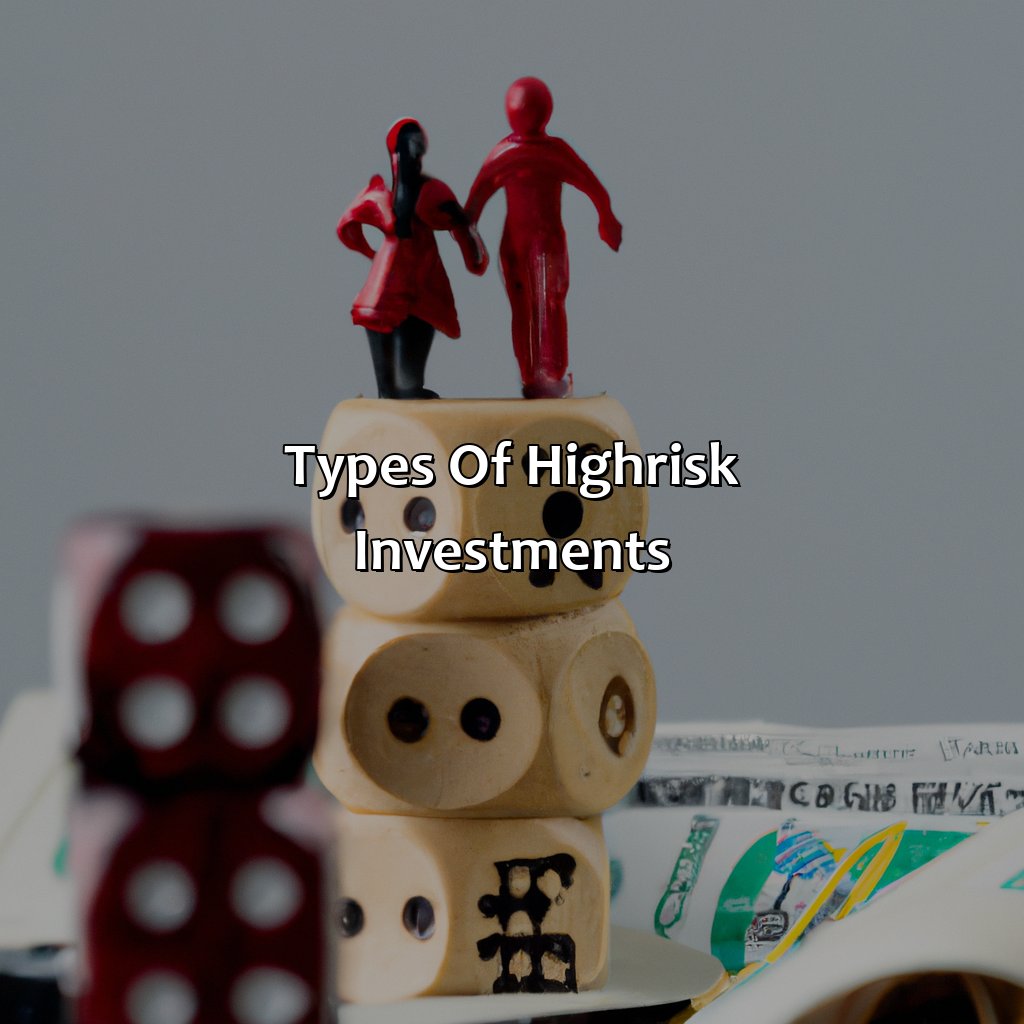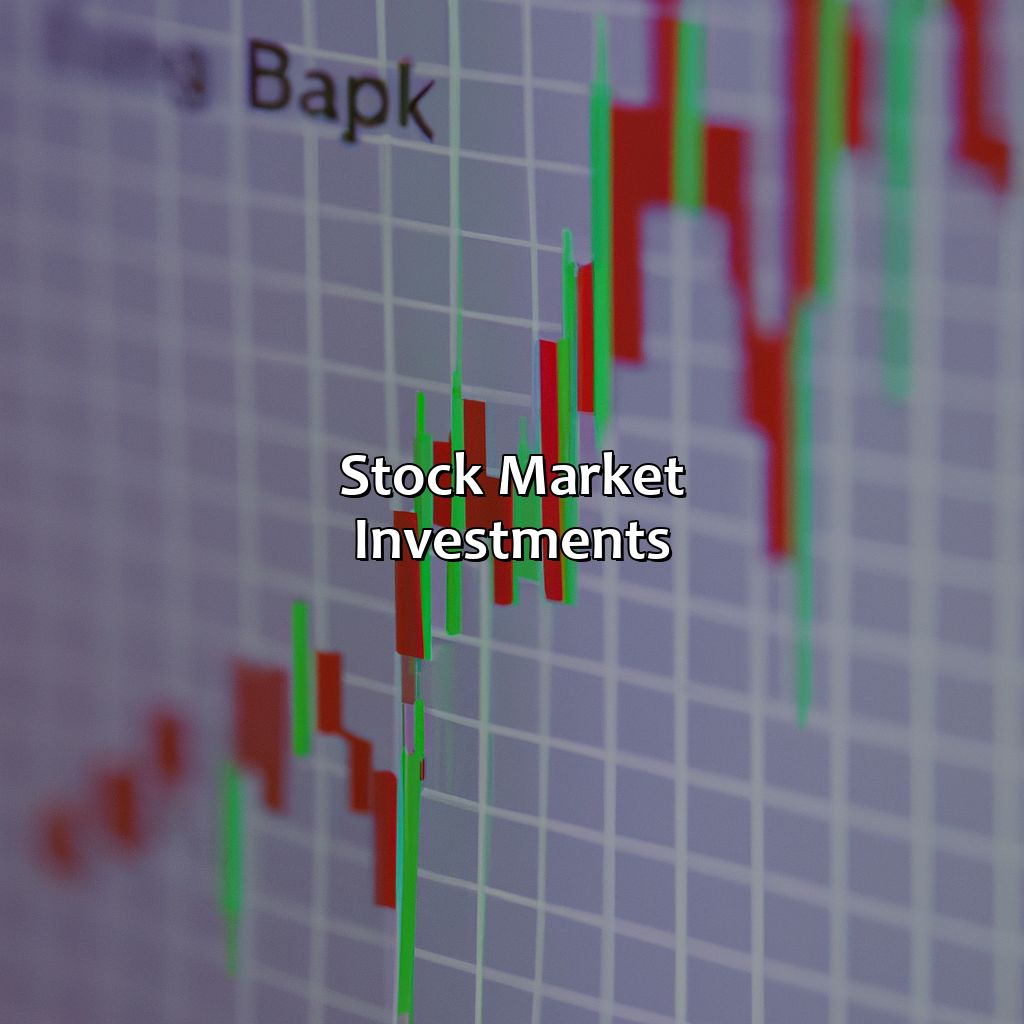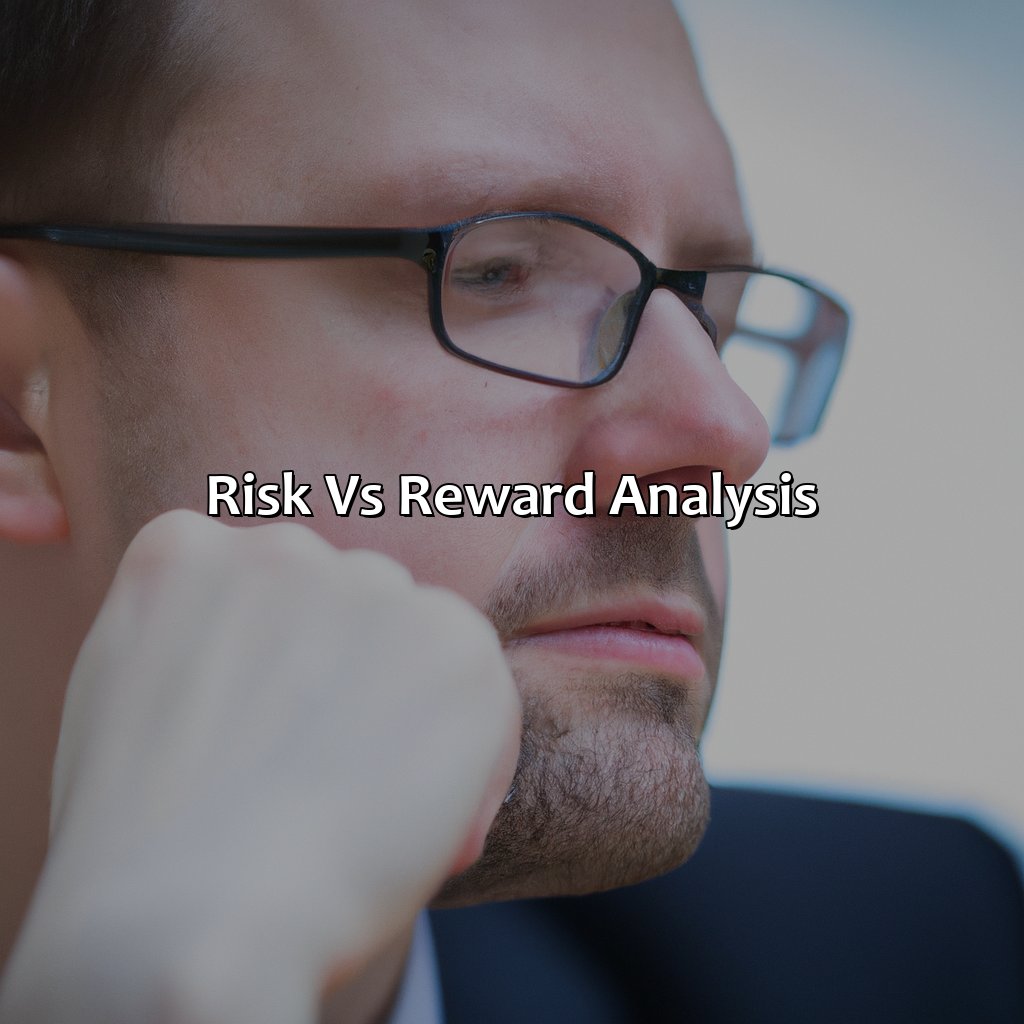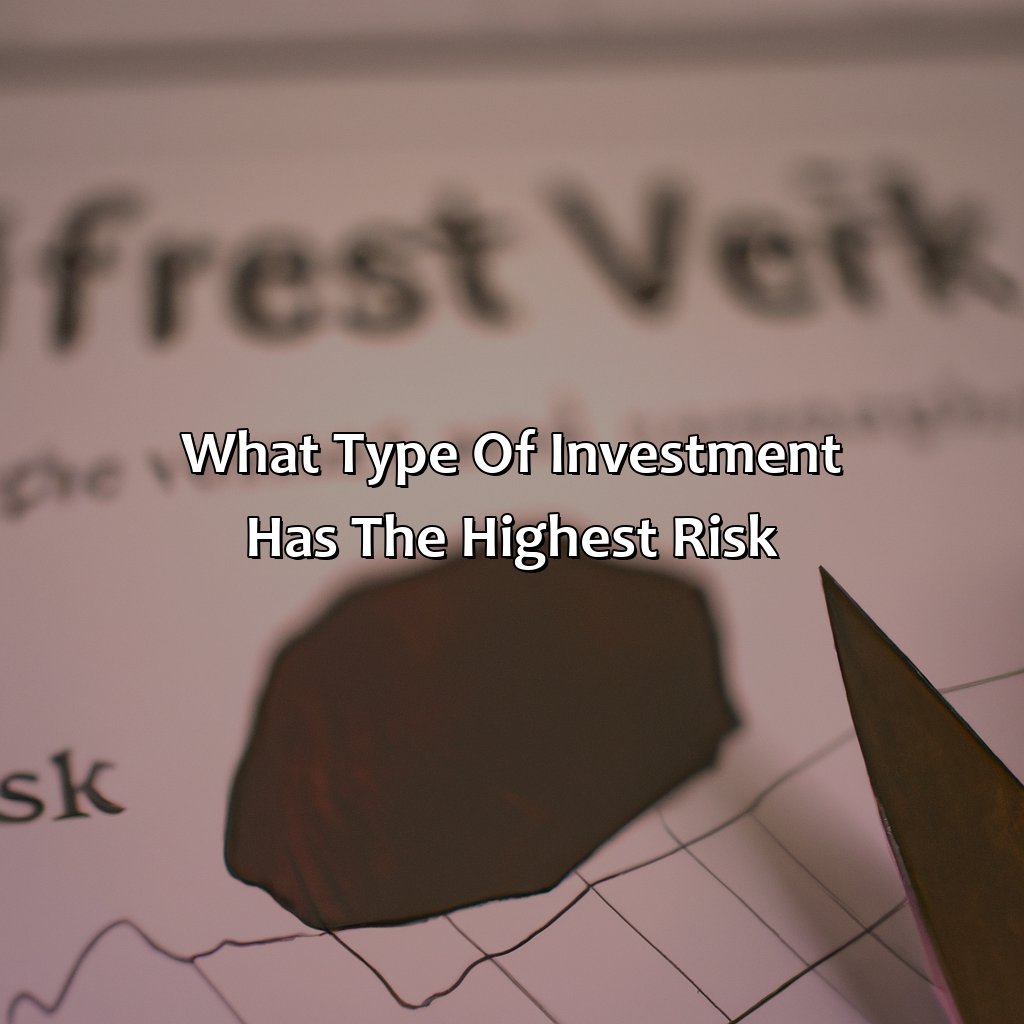What Type Of Investment Has The Highest Risk?
Key Takeaways:
- Investing in individual stocks and cryptocurrencies can have the highest risk due to their volatility and potential for high fluctuations in value.
- Real estate investments, particularly flipping properties, also have a high level of risk due to the unpredictable market and the potential for unexpected expenses.
- Risk vs. reward analysis is a crucial consideration when choosing high-risk investments, as there is often a trade-off between potential rewards and potential losses.
Are you considering investing your money but not sure which option will be the safest? Understanding the risk associated with each investment type can help you make a well informed decision. You deserve to know what type of investment has the highest risk and why.
Types of High-Risk Investments
High-Risk Investment Options: Explained
Investing always carries a level of risk, but some investments are considered to have a higher risk than others. Here are some options that fall into the category of high-risk investments:
- Alternative Investments: These include options such as hedge funds, private equity, and venture capital. They are not regulated by the Securities and Exchange Commission (SEC) and do not have the same level of protection as traditional investments.
- Commodities: Investing in commodities such as gold, oil, or agriculture can be lucrative, but their prices can be volatile, making them a high-risk investment option.
- Foreign Exchange Trading: Also known as forex, it involves exchanging currencies in the global market. This market is highly complex and fluctuates rapidly, making it a risky investment option.
Investing blindly in any of these options can lead to significant losses. Still, with proper research and an experienced investment manager, they can provide high returns.
Some other factors that can affect high-risk investments include market trends, global events, and political shifts.
It is noteworthy that, in the 1990s, Enron was viewed as a high-risk investment and a fast-growing company. Still, in 2001, after it was revealed that the company had committed massive accounting fraud, it filed for bankruptcy, causing many investors to lose significant amounts of money.
Investing in high-risk options can have a high potential reward, but it is essential to understand the level of risk involved before investing any money.

Image credits: retiregenz.com by David Woodhock
Stock Market Investments
Stock market investments refer to investments made in securities such as stocks, bonds, and mutual funds listed on stock exchanges. These investments are popular due to the potential for high returns, but also carry a high level of risk. The risk associated with stock market investments stems from the volatility of the market, which can be influenced by economic factors, political events, and overall market sentiment.
Investing in the stock market can provide opportunities for high returns, but the risks associated with it should not be ignored. The value of stocks can fluctuate drastically, leading to potential losses for investors. Therefore, it is important for investors to have a diversified portfolio that includes other investments such as real estate and fixed income securities to mitigate overall risk.
Unique details include the fact that stock market investments can produce returns in the form of capital appreciation and dividends, but timing is crucial as market movements are unpredictable and even experienced investors can make mistakes. Another important factor to consider is the duration of the investment, as long-term investments tend to have lower risks compared to short-term investments.
A real-life example of the risks involved in stock market investments is the 2008 financial crisis. Many investors suffered heavy losses as stock prices plummeted, and some even lost their life savings. This serves as a cautionary tale of the potential risks that come with investing in the stock market, emphasizing the importance of having a well-diversified portfolio and doing proper research before making investment decisions.

Image credits: retiregenz.com by Harry Arnold
Real Estate Investments
Real estate investments involve purchasing properties, such as land or buildings, with the intent of generating income or appreciation. These investments carry a wide range of risks, making them one of the most complex and challenging investment options available.
Investors in real estate face risks such as market volatility, interest rate fluctuations, and changes in economic conditions. These factors can have a significant impact on the profitability of a real estate investment.
Moreover, specific property risks can also arise, such as damage to the property, rental income loss, or difficulties finding suitable tenants, resulting in a loss of income. These factors emphasize the importance of thorough research before investing in any real estate.
In a recent incident, a real estate investor purchased a commercial property with a high market value but was unable to secure tenants due to the poor location. This led to a significant loss of investment, highlighting the importance of assessing risks accurately before making any investment decisions.
In summary, despite the potential for high returns, real estate investments come with significant risks that require careful consideration before investing. It is essential to have a deep understanding of the market, including local economic conditions and property-specific risks, to make informed and profitable investment decisions.

Image credits: retiregenz.com by David Arnold
Cryptocurrency Investments
Cryptographic Asset Investments
Investing in cryptographic assets, commonly known as cryptocurrencies, involves a high level of risk due to their decentralized nature, complex technologies, uncertain regulations, and susceptibility to market volatility. These digital assets rely on blockchain technology, making them difficult to trace and manage in cases of theft, fraud, or loss. Furthermore, cryptocurrency exchanges may be vulnerable to hacking and cyber-attacks, resulting in losses for investors. Despite the potential for high returns, investors must conduct thorough research and exercise caution before investing in cryptographic assets.
Cryptocurrency Investments must not be the only option for high-risk investments. Other alternatives, such as commodities, venture capitalists, and futures, may also provide high-risk returns to investors.
According to a report by Statista, the global cryptocurrency market cap reached $2.22 trillion in June 2021, led by Bitcoin, Ethereum, and other altcoins. This growth indicates that cryptocurrencies are gaining acceptance among investors worldwide, despite their high-risk nature.

Image credits: retiregenz.com by Yuval Woodhock
Risk vs. Reward Analysis
Investment Analysis: Risk vs. Reward
Investment can be a gamble. One makes trade-offs between expected return and potential risk. Understanding the relationship between risk and reward can help investors to gain a balanced portfolio.
The following table shows some examples of investments, their potential returns, and associated risks.
| Investment | Type of Investment | Potential Return | Risk |
|---|---|---|---|
| Stocks | Equity | High | High |
| Bonds | Fixed Income | Medium | Low |
| Real Estate | Property | Medium to High | High |
| Commodities | Commodity | Flexible | High |
| Mutual Funds | Mixed Investment | Medium to High | Medium to High |
The table highlights that there is no investment without risk, and the higher the potential returns, the higher the risk. However, investments like bonds may provide a lower potential return but are less risky. Meanwhile, stocks and real estate can give higher returns, but the risks are also more substantial. Commodities fall in between, where the return and risk fluctuate based on market volatility.
A Pro Tip for investors: Prioritize strategic, diversified portfolios over going all-in on high-risk investments. By spreading investments across different categories, geographical regions, and sectors, it is possible to mitigate risks and attain long-term benefits.

Image credits: retiregenz.com by James Jones
Some Facts About Investments with the Highest Risk:
Stocks of small companies can be the riskiest investment due to their potential for high volatility and lack of liquidity. (Source: The Balance)
Options trading can be one of the riskiest investments due to the potential for large losses, as they involve buying and selling contracts rather than stocks themselves. (Source: Investopedia)
Investing in emerging markets can be considered a higher risk investment, as developing economies may experience more volatility than established markets and may lack strong regulatory frameworks. (Source: Forbes)
Investing in high-yield (or “junk”) bonds can be a high-risk strategy, as they carry a higher risk of default than investment-grade bonds. (Source: The Street)
Leveraged ETFs, which use borrowing to boost potential returns, can be a high-risk investment, as their value can be dramatically affected by market fluctuations and compounding fees. (Source: Investopedia)
FAQs about What Type Of Investment Has The Highest Risk?
What type of investment has the highest risk?
Investments that have the highest risk are typically those that offer the potential for high returns, such as stocks, options, and futures. These types of investments are known for their volatility, which means they can experience rapid price fluctuations and can result in significant losses.
Why are these types of investments risky?
These investments are risky because they are subject to market forces and can be affected by numerous factors, including economic events, company performance, and political turmoil. These investments can also be impacted by unexpected events, such as natural disasters or terrorist attacks.
Should I avoid these types of investments altogether?
That ultimately depends on your investment goals, risk tolerance, and investment strategy. Some investors are willing to take on more risk in the hopes of achieving higher returns, while others prefer a more conservative approach. It’s important to research and understand the risks associated with any investment before making a decision.
How can I mitigate the risks of these types of investments?
One way to mitigate risk is by diversifying your investment portfolio. This means investing in a variety of different types of assets, such as stocks, bonds, and real estate, to spread out the risk. You can also invest in mutual funds or exchange-traded funds (ETFs), which provide exposure to a range of different companies or asset classes.
What are some examples of high-risk investments?
Examples of high-risk investments include penny stocks, IPOs, venture capital, and foreign currency exchange (forex) trading. These types of investments can offer the potential for high returns, but also come with significant risks.
What should I do if I’ve already lost money on a high-risk investment?
If you’ve already experienced a loss on a high-risk investment, it’s important to evaluate what went wrong and learn from the experience. You may want to consider consulting with a financial advisor or investment professional to help you develop a more strategic investment plan moving forward.
 Checkout this IRS Loophole
Checkout this IRS Loophole 
